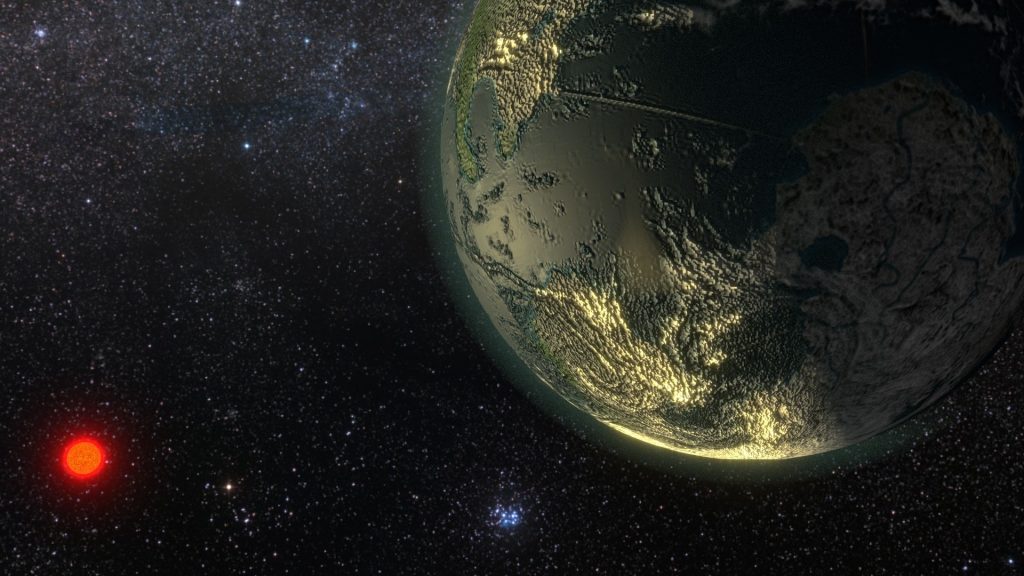
KELT-9 b is the hottest exoplanet known to date. In the summer of last year, a cooperative group of astronomers from the universities of Bern and Geneva discovered evidence of gaseous iron and titanium in the exoplanet’s atmosphere. The scientists have recently detected traces of evaporated sodium, magnesium, chromium, and the rare-Earth metals scandium and yttrium.
Exoplanets are planets outside our solar system that orbit around stars other than the Sun. Since the first exoplanets were found in the mid-90’s, well over 3,000 exoplanets have been revealed. Many of these planets are extreme compared to the planets in our solar system: Hot gas giants that orbit incredibly close to their host stars, sometimes within periods of less than a few days. Such planets do not exist in our solar system, and their existence has defied predictions of how and why planets form. For the past 20 years, astronomers from all over the world have been working to understand where these planets come from, what they are made of, and what their climates are like.
KELT-9 is a star located 650 light years from the Earth in the constellation Cygnus. Its exoplanet KELT-9 b demonstrates the most intense of these so-called hot-Jupiters because it orbits very closely around its star that is almost two times as hot as the Sun.
In such heat, all elements are almost completely evaporated and molecules are broken apart into their essential atoms – much like is the case in the outer layers of stars. This means that the atmosphere contains no clouds or vapors and the sky is clear, mostly translucent to light from its star. The atoms that make up the gas of the atmosphere attract light at very specific colors in the spectrum, and each atom has a unique “fingerprint” of colors that it attracts. These fingerprints can be measured with a sensitive spectrograph mounted on a large telescope, allowing astronomers to discern the chemical composition of the atmospheres of planets that are many light-years away.
“Using the HARPS-North spectrograph on the Italian National Telescope on the island of La Palma, we found iron and titanium atoms in the hot atmosphere of KELT-9 b”, explains Kevin Heng, Director, and Professor at the Center for Space and Habitability or CSH, at the University of Bern.
The team observed the KELT-9 system for a second time last summer, with the goal of confirming their previous detections, but also to proceed to search for additional elements that could be present in the data as well. Their survey included 73 atoms, among which some so-called rare-Earth metals. These substances are less common on Earth but are applied in advanced materials and devices.
Jens Hoeijmakers, who is the first author of the study which is now published in the Journal Astronomy & Astrophysics and who is a Postdoc at the CSH in Bern and at Geneva Observatory, says: “Our team predicted that the spectrum of this planet could well be a treasure trove where a multitude of species can be detected that have not been observed in the atmosphere of any other planet before.”
“With further observations, many more elements may well be discovered by using the same technique in the atmosphere of this planet in the future, and perhaps also on other planets that are heated to similarly high temperatures”, explains Jens Hoeijmakers.
Kevin Heng adds: “The chances are good that one day we will find so-called biosignatures, i.e. signs of life, on an exoplanet, using the same techniques that we are applying today.
